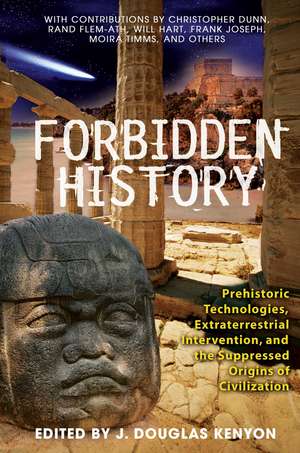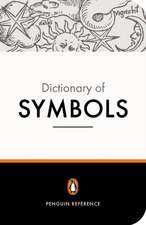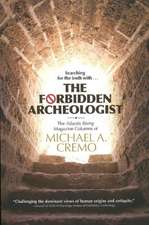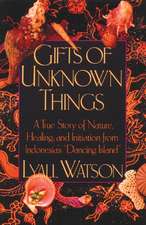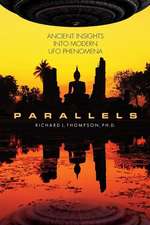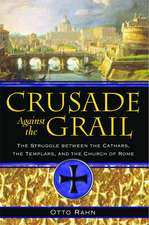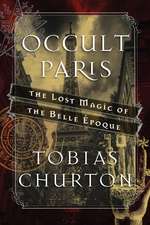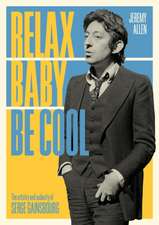Forbidden History: Prehistoric Technologies, Extraterrestrial Intervention, and the Suppressed Origins of Civilization
Editat de J. Douglas Kenyonen Limba Engleză Paperback – 29 mar 2005
Preț: 92.05 lei
Preț vechi: 122.70 lei
-25% Nou
Puncte Express: 138
Preț estimativ în valută:
17.62€ • 19.13$ • 14.80£
17.62€ • 19.13$ • 14.80£
Carte disponibilă
Livrare economică 04-16 aprilie
Preluare comenzi: 021 569.72.76
Specificații
ISBN-13: 9781591430452
ISBN-10: 1591430453
Pagini: 344
Ilustrații: Includes 8-page color insert and 108 b&w illustrations
Dimensiuni: 152 x 229 x 18 mm
Greutate: 0.41 kg
Ediția:Original
Editura: Inner Traditions/Bear & Company
Colecția Bear & Company
Locul publicării:United States
ISBN-10: 1591430453
Pagini: 344
Ilustrații: Includes 8-page color insert and 108 b&w illustrations
Dimensiuni: 152 x 229 x 18 mm
Greutate: 0.41 kg
Ediția:Original
Editura: Inner Traditions/Bear & Company
Colecția Bear & Company
Locul publicării:United States
Notă biografică
J. Douglas Kenyon is the editor and publisher of Atlantis Rising. He lives in Montana.
Extras
Chapter 20
Atlantology: Psychotic or Inspired?
Media Stereotypes Aside, What Kind of Person Pursues Knowledge of a Forgotten Civilization?
--Frank Joseph
A mainstream archaeologist interviewed about Atlantis on a recent special for The Discovery Channel declared that the only people who believe in such garbage are cranks, fools, and charlatans. His assessment is shared by conventional scientists, who insist that no one of any intellectual worth would demean him- or herself by seriously considering any sunken civilization. True, virtually no university-trained researchers today are willing to risk the wrath of conservative academics not above sabotaging the careers of independently minded colleagues.
But contrary to the Establishment’s defaming characterization of persons interested in the historical possibility of Atlantis, the subject has for centuries attracted some of the best brains in the world. Solon, one of the Seven Wise Men of Greece, was also the first great poet of Athens. In the late sixth century BC, the great lawgiver traveled to Sais, the Nile Delta capital of the 26th Dynasty, where the Temple of Neith was located.
Here a history of Etelenty was preserved in hieroglyphs inscribed or painted on dedicated columns, which were translated for him by the high priest, Sonchis. Returning to Greece, Solon worked all the details of the account into an epic poem, “Atlantikos,” but was distracted by political problems from completing the project before his death in 560 BC. About 150 years later, the unfinished manuscript was given to Plato, who formed two dialogues, Timaeus and Critias, from it.
As one of the very greatest historical figures in Classical Greek history, Solon’s early connection with the story of Atlantis lends it formidable credibility. But neither he nor Plato were the only towering figures of Classical antiquity to embrace the reality of Atlantis. Statius Sebosus was a Greek geographer and contemporary of Plato mentioned by the Roman scientist Pliny the Elder for his detailed description of Atlantis.
All the works of Statius Sebosus were lost with the fall of Classical civilization. Dionysus of Miletus, also known as “Skytobrachion” for his prosthetic leather arm, wrote A Voyage to Atlantis around 550 BC, predating not only Plato but even Solon. A copy of Dionysus’s manuscript was found among the personal papers of historical writer Pierre Benoit. Tragically, it was lost between the borrowers and restorers who made use of this valuable piece of source material after Benoit’s death.
A utopian novel written by Francis Bacon in 1629, The New Atlantis, was the first written discussion of Atlantis since the fall of Classical civilization and probably sparked Athanasius Kircher’s interest in the subject, when he published his own scientific study of Atlantis in The Subterranean World thirty-six years later. Although a work of fiction, The New Atlantis came about through excited discussions in contemporary scholarly circles of reports from travelers to America. They stated that the indigenous peoples had oral accounts of a land comprising numerous points in common with Plato’s sunken civilization; they even called it Aztlan, which paralleled a native version of the Greek Atlantis. The New Atlantis actually incorporates some Atlanto-American myths Bacon heard repeated in London.
A German polymath of the seventeenth century, the Jesuit priest Athanasius Kircher was a pioneering mathematician, physicist, chemist, linguist, and archaeologist. Kircher was also the first scholar to seriously investigate the Atlantis legend. Initially skeptical, he cautiously began reconsidering its credibility while assembling mythic traditions about a great flood from numerous cultures in various parts of the world.
Among the relatively few surviving documents from Imperial Rome, Kircher found a well-preserved, treated-leather map purporting to show the configuration and location of Atlantis. The map was not Roman, but had been brought in the first century AD to Italy from Egypt where it had been executed. It survived the demise of Classical times and found its way into the Vatican Library. Kircher copied it precisely (adding only a visual reference to the New World) and published it in his book The Subterranean World. His caption states it is a map of the island of Atlantis, originally made in Egypt after Plato’s description, which suggests it was created sometime following the fourth century BC, perhaps by a Greek mapmaker attached to the Ptolemies. More probably the map’s first home was the Great Library of Alexandria, where numerous books and references to Atlantis were lost, along with another million-plus volumes, when the institution was burned by religious fanatics. By relocating to Rome, the map escaped that destruction.
Although the map vanished after Kircher’s death in 1680, it was the only known representation of Atlantis to have survived the Ancient World. Thanks to his research and book, it survives today in a close copy. Curiously, it is depicted upside-down, contrary to maps in both his day and ours. Yet this apparent anomaly is proof of the map’s authenticity, because Egyptian mapmakers, even as late as Ptolemaic times, designed their maps with the Upper Nile Valley (located in the south, “Upper” refers to its higher elevation) at the top, because the river’s headwaters are located in the Sudan.
Contrary to mean-spirited characterizations by conservative archaeologists, it says something for the credibility of Atlantis that many of the greatest thinkers in the history of western civilization have been among its most prominent advocates.
Atlantology: Psychotic or Inspired?
Media Stereotypes Aside, What Kind of Person Pursues Knowledge of a Forgotten Civilization?
--Frank Joseph
A mainstream archaeologist interviewed about Atlantis on a recent special for The Discovery Channel declared that the only people who believe in such garbage are cranks, fools, and charlatans. His assessment is shared by conventional scientists, who insist that no one of any intellectual worth would demean him- or herself by seriously considering any sunken civilization. True, virtually no university-trained researchers today are willing to risk the wrath of conservative academics not above sabotaging the careers of independently minded colleagues.
But contrary to the Establishment’s defaming characterization of persons interested in the historical possibility of Atlantis, the subject has for centuries attracted some of the best brains in the world. Solon, one of the Seven Wise Men of Greece, was also the first great poet of Athens. In the late sixth century BC, the great lawgiver traveled to Sais, the Nile Delta capital of the 26th Dynasty, where the Temple of Neith was located.
Here a history of Etelenty was preserved in hieroglyphs inscribed or painted on dedicated columns, which were translated for him by the high priest, Sonchis. Returning to Greece, Solon worked all the details of the account into an epic poem, “Atlantikos,” but was distracted by political problems from completing the project before his death in 560 BC. About 150 years later, the unfinished manuscript was given to Plato, who formed two dialogues, Timaeus and Critias, from it.
As one of the very greatest historical figures in Classical Greek history, Solon’s early connection with the story of Atlantis lends it formidable credibility. But neither he nor Plato were the only towering figures of Classical antiquity to embrace the reality of Atlantis. Statius Sebosus was a Greek geographer and contemporary of Plato mentioned by the Roman scientist Pliny the Elder for his detailed description of Atlantis.
All the works of Statius Sebosus were lost with the fall of Classical civilization. Dionysus of Miletus, also known as “Skytobrachion” for his prosthetic leather arm, wrote A Voyage to Atlantis around 550 BC, predating not only Plato but even Solon. A copy of Dionysus’s manuscript was found among the personal papers of historical writer Pierre Benoit. Tragically, it was lost between the borrowers and restorers who made use of this valuable piece of source material after Benoit’s death.
A utopian novel written by Francis Bacon in 1629, The New Atlantis, was the first written discussion of Atlantis since the fall of Classical civilization and probably sparked Athanasius Kircher’s interest in the subject, when he published his own scientific study of Atlantis in The Subterranean World thirty-six years later. Although a work of fiction, The New Atlantis came about through excited discussions in contemporary scholarly circles of reports from travelers to America. They stated that the indigenous peoples had oral accounts of a land comprising numerous points in common with Plato’s sunken civilization; they even called it Aztlan, which paralleled a native version of the Greek Atlantis. The New Atlantis actually incorporates some Atlanto-American myths Bacon heard repeated in London.
A German polymath of the seventeenth century, the Jesuit priest Athanasius Kircher was a pioneering mathematician, physicist, chemist, linguist, and archaeologist. Kircher was also the first scholar to seriously investigate the Atlantis legend. Initially skeptical, he cautiously began reconsidering its credibility while assembling mythic traditions about a great flood from numerous cultures in various parts of the world.
Among the relatively few surviving documents from Imperial Rome, Kircher found a well-preserved, treated-leather map purporting to show the configuration and location of Atlantis. The map was not Roman, but had been brought in the first century AD to Italy from Egypt where it had been executed. It survived the demise of Classical times and found its way into the Vatican Library. Kircher copied it precisely (adding only a visual reference to the New World) and published it in his book The Subterranean World. His caption states it is a map of the island of Atlantis, originally made in Egypt after Plato’s description, which suggests it was created sometime following the fourth century BC, perhaps by a Greek mapmaker attached to the Ptolemies. More probably the map’s first home was the Great Library of Alexandria, where numerous books and references to Atlantis were lost, along with another million-plus volumes, when the institution was burned by religious fanatics. By relocating to Rome, the map escaped that destruction.
Although the map vanished after Kircher’s death in 1680, it was the only known representation of Atlantis to have survived the Ancient World. Thanks to his research and book, it survives today in a close copy. Curiously, it is depicted upside-down, contrary to maps in both his day and ours. Yet this apparent anomaly is proof of the map’s authenticity, because Egyptian mapmakers, even as late as Ptolemaic times, designed their maps with the Upper Nile Valley (located in the south, “Upper” refers to its higher elevation) at the top, because the river’s headwaters are located in the Sudan.
Contrary to mean-spirited characterizations by conservative archaeologists, it says something for the credibility of Atlantis that many of the greatest thinkers in the history of western civilization have been among its most prominent advocates.
Cuprins
Introduction
Part ONE---The Old Models Don’t Work: Darwinism and Creationism under Fire
1--Darwin’s Demise: On the Futile Search for Missing Links
--Will Hart
2--Evolution vs. Creation: Is the Debate for Real?
--David Lewis
3--Exposing a Scientific Cover-Up: Forbidden Archeology Coauthor Michael Cremo Talks about the “Knowledge Filter” and Other Means for Cooking the Academic Books
--J. Douglas Kenyon
Part TWO---Making the Case for Catastrophism: Earth Changes, Sudden and Gradual
4--In Defense of Catastrophes: Pioneering Geologist Robert Schoch Challenges the Conventional Wisdom on Natural History
--William P. Eigles
5--Cataclysm 9500 b.c.e.: Two New Works of Immense Scholarship Throw Orthodox Ice Age Theories into Question and, in the Process, Corroborate Plato and Many Other Ancient Sources
--David Lewis
6--The Case for the Flood: Exposing the Scientific Myth of the Ice Age
--Peter Bros
7--The Martyrdom of Immanuel Velikovsky: As Catastrophists Gain Ground, an Early Hero Gets Some Long Overdue Credit
--John Kettler
8--The Perils of Planetary Amnesia: As Evidence of Ancient Cataclysm Mounts, the Legacy of a Rejected Genius Is Reconsidered
--Steve Parsons
9--Thunderbolts of the Gods: Does Growing Evidence of an Electric Universe Reveal Previously Hidden Meaning in Ancient Mythology?
--Mel and Amy Acheson
Part THREE---Exploring the Greater Antiquity of Civilization
10--The Enigma of India’s Origins: The Dating of New Discoveries in the Gulf of Cambay Upsets the Orthodox Scenario for the Dawn of Civilization
--David Lewis
11--Pushing Back the Portals of Civilization: For John Anthony West, the Quest for Evidence of Advanced Prehistoric Civilization Is Bearing New Fruit
--J. Douglas Kenyon
12--New Studies Confirm Very Old Sphinx: Orthodox Protests Notwithstanding, Evidence for the Schoch/West Thesis Is Growing
--Robert M. Schoch, Ph.D.
13--R. A. Schwaller de Lubicz’s Magnum Opus: The Keys to Understanding the Wisdom of the Ancients Have Been Preserved
--Joseph Ray, Ph.D.
14--Fingerprinting the Gods: A Bestselling Author Is Making a Convincing Case for a Great but Officially Forgotten Civilization
--J. Douglas Kenyon
15--The Central American Mystery: What Could Explain the Failure of Mainstream Science to Unravel the Origins of Mesoamerica’s Advanced Ancient Cultures?
--Will Hart
16--Destination Galactic Center: John Major Jenkins Thinks Today’s World Has Much to Learn from the Ancient Maya
--Moira Timms
Part FOUR---Searching for the Fountainhead
17--Megalithic England: The Atlantean Dimensions, a Conversation with John Michell
--J. Douglas Kenyon
18--Plato, the Truth: How Does the Credibility of the Best-Known Chronicler of Atlantis Stand Up?
--Frank Joseph
19--The Aegean Atlantis Deception: Was Plato’s Grand Tale Nothing More Than the Saga of an Insignificant Greek Island?
--Frank Joseph
20--Atlantology: Psychotic or Inspired? Media Stereotypes Aside, What Kind of Person Pursues Knowledge of a Forgotten Civilization?
--Frank Joseph
21--Atlantis in Antarctica: Forget About the North Atlantic and the Aegean, Says Author Rand Flem-Ath
--J. Douglas Kenyon
22--Blueprint from Atlantis: Do Alignments of Ancient Monuments Have Something to Tell Us about the History of Earth’s Shifting Crust?
--Rand Flem-Ath
23--Japan’s Underwater Ruins: Have Remains of Ancient Lemuria Been Found?
--Frank Joseph
24--West, Schoch, and Hancock Dive into Lemurian Waters
--J. Douglas Kenyon
25--India 30,000 b.c.e.: Do the Roots of Indian Culture Lie Drowned beneath the Indian Ocean?
--David Lewis
Part FIVE---Ancient High Tech
26--A Conversation with Peter Tompkins: Secrets of Forgotten Worlds
--J. Douglas Kenyon
27--Ancient Agriculture, in Search of the Missing Links: Is the Inescapable Evidence of a Lost Fountainhead of Civilization to Be Found Growing in Our Fields?
--Will Hart
28--Advanced Technology: How Advanced? What Does the Evidence Really Show?
--Frank Joseph
29--Archeology and the Law of Gravity: Orthodox Theory of Ancient Capability Tends to Cave In under Its Own Weight
--Will Hart
30--An Engineer in Egypt: Did the Ancient Egyptians Possess Toolmaking Skills Comparable to Those of the Space Age?
--Christopher Dunn
31--The Giza Power Plant, Technologies of Ancient Egypt: A New Book Challenges Conventional Wisdom on the Intended Purpose of the Great Pyramid
--Christopher Dunn
32--Return to the Giza Power Plant: Technologist Chris Dunn Finds New Fuel for His Thesis
--Christopher Dunn
33--Petrie on Trial: Have Arguments for Advanced Ancient Machining Made by the Great Nineteenth-Century Egyptologist Sir William Flinders Petrie Been Disproved? Christopher Dunn Takes On the Debunkers
--Christopher Dunn
34--How Did the Pyramid Builders Spell Relief? Do We Really Know Why the Ancients Used Such Giant Stones in the Pyramid’s So-Called Relieving Chambers?
--Christopher Dunn
35--Precision: Did the Ancients Have It? And If They Did, Should It Matter to Us?
--Christopher Dunn
36--The Obelisk Quarry Mystery: Do Egyptologists Really Know How These Monuments Were Created?
--Christopher Dunn
37--Behind the Pyramid’s Secret Doors: What Does Astonishing New Evidence Reveal about the Great Pyramid’s True Purpose?
--Chistopher Dunn
38--The Case for Advanced Technology in the Great Pyramid: What Does the Evidence Really Show about the Advancement of Its Builders?
--Marshall Payn
Part SIX---New Models to Ponder
39--Visitors from Beyond: Our Civilization Is a Legacy from Space Travelers, Says Zecharia Sitchin, and His New Book Offers to Unveil New Secrets of Divine Encounters
--J. Douglas Kenyon
40--Artifacts in Space: For Author Richard Hoagland, the Trail of Ancient ETs Is Getting Much Warmer
--J. Douglas Kenyon
41--The Pulsar Mystery: Could the Enigmatic Phenomenon Be the Work of an Ancient ET Civilization? A New Scientific Study Makes the Astonishing Case
--Len Kasten
42--The Physicist as Mystic
--David Lewis
Recommended Reading: Selected
Bibliography
Contributors
Part ONE---The Old Models Don’t Work: Darwinism and Creationism under Fire
1--Darwin’s Demise: On the Futile Search for Missing Links
--Will Hart
2--Evolution vs. Creation: Is the Debate for Real?
--David Lewis
3--Exposing a Scientific Cover-Up: Forbidden Archeology Coauthor Michael Cremo Talks about the “Knowledge Filter” and Other Means for Cooking the Academic Books
--J. Douglas Kenyon
Part TWO---Making the Case for Catastrophism: Earth Changes, Sudden and Gradual
4--In Defense of Catastrophes: Pioneering Geologist Robert Schoch Challenges the Conventional Wisdom on Natural History
--William P. Eigles
5--Cataclysm 9500 b.c.e.: Two New Works of Immense Scholarship Throw Orthodox Ice Age Theories into Question and, in the Process, Corroborate Plato and Many Other Ancient Sources
--David Lewis
6--The Case for the Flood: Exposing the Scientific Myth of the Ice Age
--Peter Bros
7--The Martyrdom of Immanuel Velikovsky: As Catastrophists Gain Ground, an Early Hero Gets Some Long Overdue Credit
--John Kettler
8--The Perils of Planetary Amnesia: As Evidence of Ancient Cataclysm Mounts, the Legacy of a Rejected Genius Is Reconsidered
--Steve Parsons
9--Thunderbolts of the Gods: Does Growing Evidence of an Electric Universe Reveal Previously Hidden Meaning in Ancient Mythology?
--Mel and Amy Acheson
Part THREE---Exploring the Greater Antiquity of Civilization
10--The Enigma of India’s Origins: The Dating of New Discoveries in the Gulf of Cambay Upsets the Orthodox Scenario for the Dawn of Civilization
--David Lewis
11--Pushing Back the Portals of Civilization: For John Anthony West, the Quest for Evidence of Advanced Prehistoric Civilization Is Bearing New Fruit
--J. Douglas Kenyon
12--New Studies Confirm Very Old Sphinx: Orthodox Protests Notwithstanding, Evidence for the Schoch/West Thesis Is Growing
--Robert M. Schoch, Ph.D.
13--R. A. Schwaller de Lubicz’s Magnum Opus: The Keys to Understanding the Wisdom of the Ancients Have Been Preserved
--Joseph Ray, Ph.D.
14--Fingerprinting the Gods: A Bestselling Author Is Making a Convincing Case for a Great but Officially Forgotten Civilization
--J. Douglas Kenyon
15--The Central American Mystery: What Could Explain the Failure of Mainstream Science to Unravel the Origins of Mesoamerica’s Advanced Ancient Cultures?
--Will Hart
16--Destination Galactic Center: John Major Jenkins Thinks Today’s World Has Much to Learn from the Ancient Maya
--Moira Timms
Part FOUR---Searching for the Fountainhead
17--Megalithic England: The Atlantean Dimensions, a Conversation with John Michell
--J. Douglas Kenyon
18--Plato, the Truth: How Does the Credibility of the Best-Known Chronicler of Atlantis Stand Up?
--Frank Joseph
19--The Aegean Atlantis Deception: Was Plato’s Grand Tale Nothing More Than the Saga of an Insignificant Greek Island?
--Frank Joseph
20--Atlantology: Psychotic or Inspired? Media Stereotypes Aside, What Kind of Person Pursues Knowledge of a Forgotten Civilization?
--Frank Joseph
21--Atlantis in Antarctica: Forget About the North Atlantic and the Aegean, Says Author Rand Flem-Ath
--J. Douglas Kenyon
22--Blueprint from Atlantis: Do Alignments of Ancient Monuments Have Something to Tell Us about the History of Earth’s Shifting Crust?
--Rand Flem-Ath
23--Japan’s Underwater Ruins: Have Remains of Ancient Lemuria Been Found?
--Frank Joseph
24--West, Schoch, and Hancock Dive into Lemurian Waters
--J. Douglas Kenyon
25--India 30,000 b.c.e.: Do the Roots of Indian Culture Lie Drowned beneath the Indian Ocean?
--David Lewis
Part FIVE---Ancient High Tech
26--A Conversation with Peter Tompkins: Secrets of Forgotten Worlds
--J. Douglas Kenyon
27--Ancient Agriculture, in Search of the Missing Links: Is the Inescapable Evidence of a Lost Fountainhead of Civilization to Be Found Growing in Our Fields?
--Will Hart
28--Advanced Technology: How Advanced? What Does the Evidence Really Show?
--Frank Joseph
29--Archeology and the Law of Gravity: Orthodox Theory of Ancient Capability Tends to Cave In under Its Own Weight
--Will Hart
30--An Engineer in Egypt: Did the Ancient Egyptians Possess Toolmaking Skills Comparable to Those of the Space Age?
--Christopher Dunn
31--The Giza Power Plant, Technologies of Ancient Egypt: A New Book Challenges Conventional Wisdom on the Intended Purpose of the Great Pyramid
--Christopher Dunn
32--Return to the Giza Power Plant: Technologist Chris Dunn Finds New Fuel for His Thesis
--Christopher Dunn
33--Petrie on Trial: Have Arguments for Advanced Ancient Machining Made by the Great Nineteenth-Century Egyptologist Sir William Flinders Petrie Been Disproved? Christopher Dunn Takes On the Debunkers
--Christopher Dunn
34--How Did the Pyramid Builders Spell Relief? Do We Really Know Why the Ancients Used Such Giant Stones in the Pyramid’s So-Called Relieving Chambers?
--Christopher Dunn
35--Precision: Did the Ancients Have It? And If They Did, Should It Matter to Us?
--Christopher Dunn
36--The Obelisk Quarry Mystery: Do Egyptologists Really Know How These Monuments Were Created?
--Christopher Dunn
37--Behind the Pyramid’s Secret Doors: What Does Astonishing New Evidence Reveal about the Great Pyramid’s True Purpose?
--Chistopher Dunn
38--The Case for Advanced Technology in the Great Pyramid: What Does the Evidence Really Show about the Advancement of Its Builders?
--Marshall Payn
Part SIX---New Models to Ponder
39--Visitors from Beyond: Our Civilization Is a Legacy from Space Travelers, Says Zecharia Sitchin, and His New Book Offers to Unveil New Secrets of Divine Encounters
--J. Douglas Kenyon
40--Artifacts in Space: For Author Richard Hoagland, the Trail of Ancient ETs Is Getting Much Warmer
--J. Douglas Kenyon
41--The Pulsar Mystery: Could the Enigmatic Phenomenon Be the Work of an Ancient ET Civilization? A New Scientific Study Makes the Astonishing Case
--Len Kasten
42--The Physicist as Mystic
--David Lewis
Recommended Reading: Selected
Bibliography
Contributors
Recenzii
". . . a case in support of a much greater antiquity for civilization, a convincing argument for the existence of advanced technologies in prehistory, and the outline of a lost fountainhead of world culture."
“. . .essays by such well-known investigators as Robert Schoch, Christopher Dunn or Rand Flem-Ath examine surprisingly sophisticated technology in Pharaonic Egypt, and reconsider possibilities for a global catastrophe that may have altered the course of civilization. . . . this superb new book. . . has much to offer anyone questioning the official party-line concerning mankind’s ancient past.”
"This is a great compilation. . . . the type of book that makes you question what you have been told and makes you want to discover more for yourself."
"These thoughtful, well-presented and impeccably researched essays form a foundation of history itself, presenting a totally different viepoint of who we are, where we come from, ans why we are here--not to mention where we may be heading."
"Read what researchers have to say about prehistoric technologies, evolution versus creation, earth changes, and even the case for extraterrestrial intervention. Look through the eyes of mystics, scientists, and researchers at the top of their fields and see what they have to say about some of the latest finds and discoveries. . . ."
"Forbidden History brings out why it’s so difficult to accept new ideas and how those with vested interests are firmly entrenched and filter out most everything that might threaten the accepted world view. This book slipped through the cracks."
"The days of secrecy and suppression need to come to an end because challenging deeply entrenched and outdated scientific and religious worldviews are the hallmark of a civilized society evolving toward higher ideals and truth."
"The book serves as an excellent introduction to hitherto suppressed and alternative accounts of history as contributors raise questions about the origins of civilization and humanity, catastrophism, and ancient technology."
"This is an excellent compilation of the work of some of the key thinkers on some very highly charged issues, such as creationism and Darwinism."
“. . .essays by such well-known investigators as Robert Schoch, Christopher Dunn or Rand Flem-Ath examine surprisingly sophisticated technology in Pharaonic Egypt, and reconsider possibilities for a global catastrophe that may have altered the course of civilization. . . . this superb new book. . . has much to offer anyone questioning the official party-line concerning mankind’s ancient past.”
"This is a great compilation. . . . the type of book that makes you question what you have been told and makes you want to discover more for yourself."
"These thoughtful, well-presented and impeccably researched essays form a foundation of history itself, presenting a totally different viepoint of who we are, where we come from, ans why we are here--not to mention where we may be heading."
"Read what researchers have to say about prehistoric technologies, evolution versus creation, earth changes, and even the case for extraterrestrial intervention. Look through the eyes of mystics, scientists, and researchers at the top of their fields and see what they have to say about some of the latest finds and discoveries. . . ."
"Forbidden History brings out why it’s so difficult to accept new ideas and how those with vested interests are firmly entrenched and filter out most everything that might threaten the accepted world view. This book slipped through the cracks."
"The days of secrecy and suppression need to come to an end because challenging deeply entrenched and outdated scientific and religious worldviews are the hallmark of a civilized society evolving toward higher ideals and truth."
"The book serves as an excellent introduction to hitherto suppressed and alternative accounts of history as contributors raise questions about the origins of civilization and humanity, catastrophism, and ancient technology."
"This is an excellent compilation of the work of some of the key thinkers on some very highly charged issues, such as creationism and Darwinism."
Descriere
Challenges the scientific theories on the establishment of civilization and technology.
